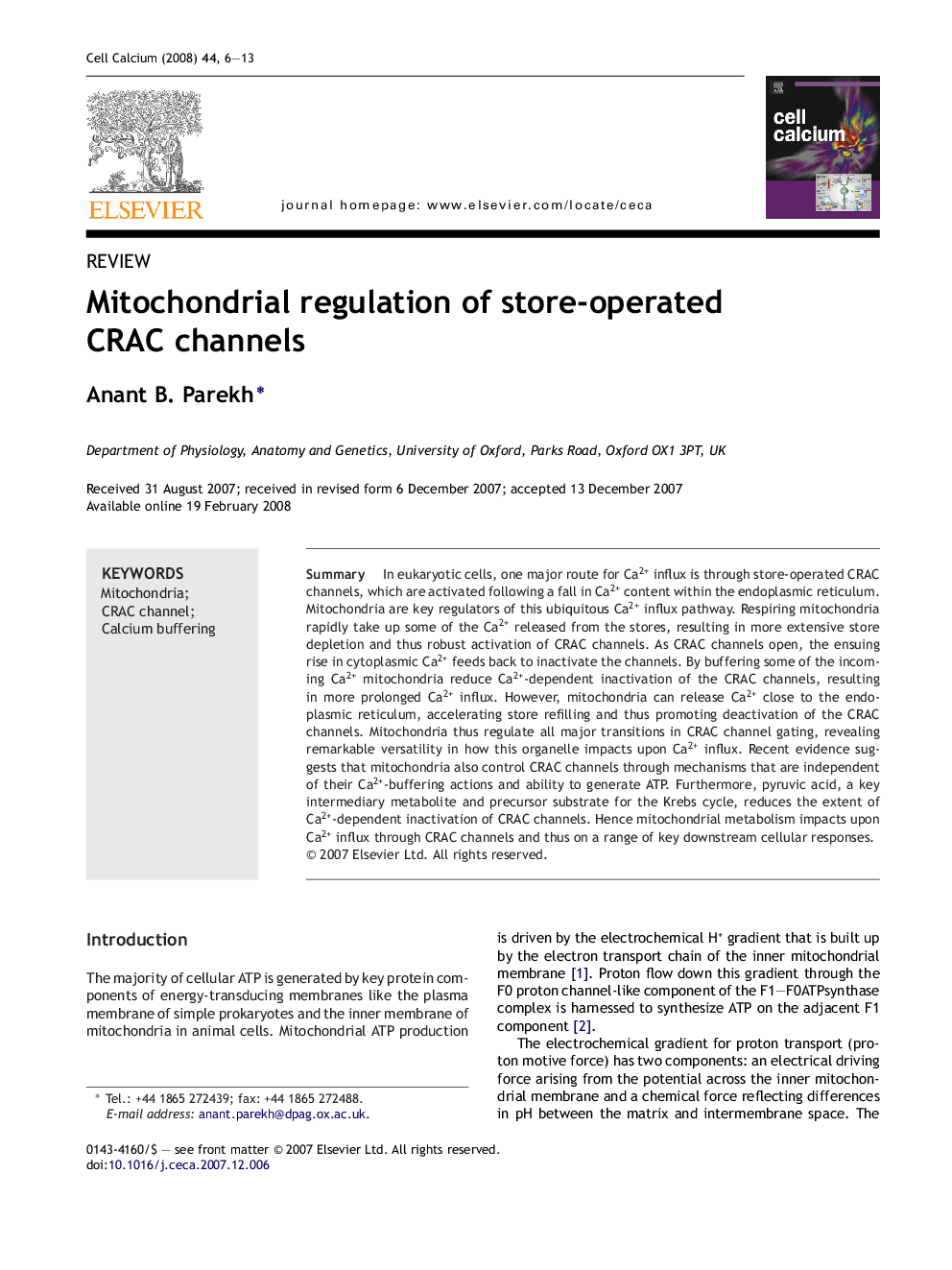| Article ID | Journal | Published Year | Pages | File Type |
|---|---|---|---|---|
| 2166563 | Cell Calcium | 2008 | 8 Pages |
SummaryIn eukaryotic cells, one major route for Ca2+ influx is through store-operated CRAC channels, which are activated following a fall in Ca2+ content within the endoplasmic reticulum. Mitochondria are key regulators of this ubiquitous Ca2+ influx pathway. Respiring mitochondria rapidly take up some of the Ca2+ released from the stores, resulting in more extensive store depletion and thus robust activation of CRAC channels. As CRAC channels open, the ensuing rise in cytoplasmic Ca2+ feeds back to inactivate the channels. By buffering some of the incoming Ca2+ mitochondria reduce Ca2+-dependent inactivation of the CRAC channels, resulting in more prolonged Ca2+ influx. However, mitochondria can release Ca2+ close to the endoplasmic reticulum, accelerating store refilling and thus promoting deactivation of the CRAC channels. Mitochondria thus regulate all major transitions in CRAC channel gating, revealing remarkable versatility in how this organelle impacts upon Ca2+ influx. Recent evidence suggests that mitochondria also control CRAC channels through mechanisms that are independent of their Ca2+-buffering actions and ability to generate ATP. Furthermore, pyruvic acid, a key intermediary metabolite and precursor substrate for the Krebs cycle, reduces the extent of Ca2+-dependent inactivation of CRAC channels. Hence mitochondrial metabolism impacts upon Ca2+ influx through CRAC channels and thus on a range of key downstream cellular responses.
